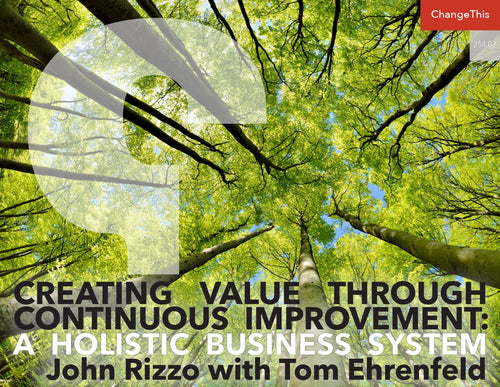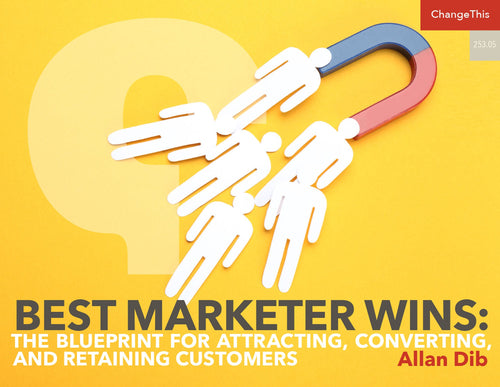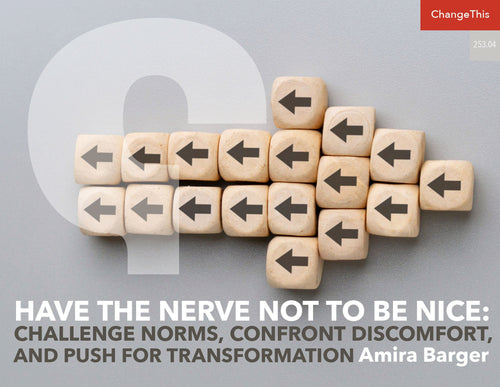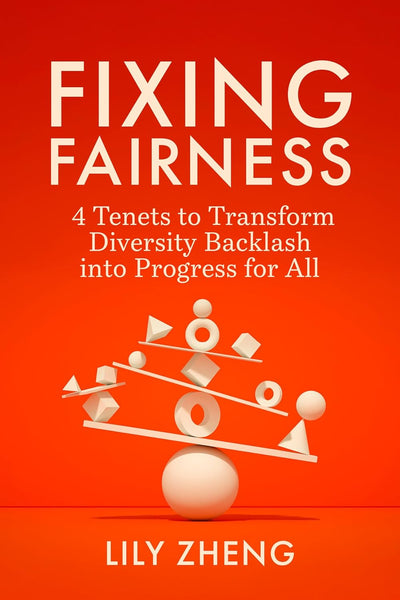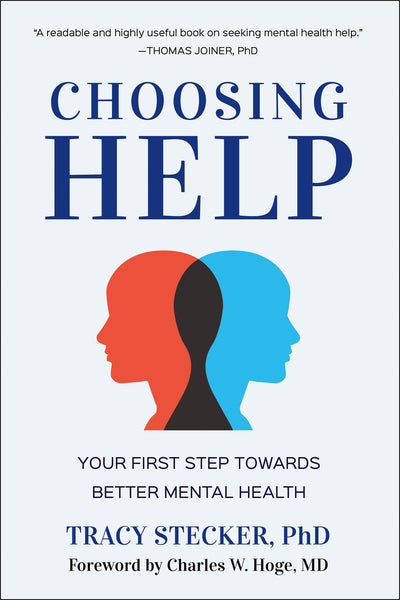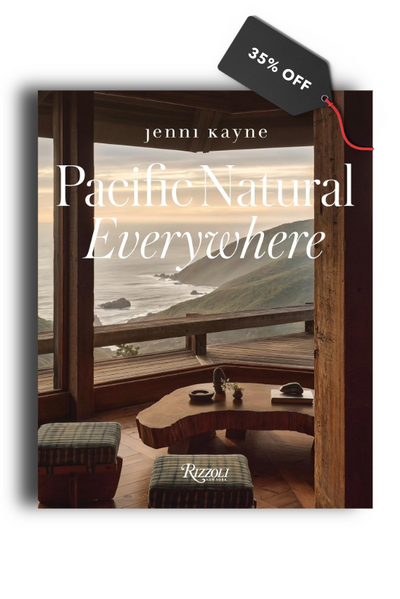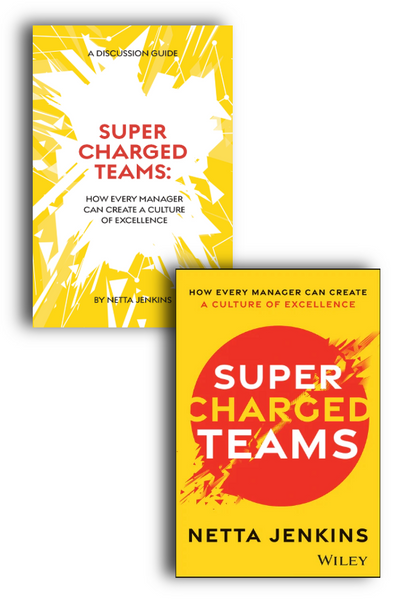The Evolution of Customer Experience: From Consistency to Purpose
"While consistency or emotional engagement will be sufficient for some situations, to create true customer relevance, companies must raise their aim when designing their experience. Customer experience has a new higher bar: purpose."

The search to determine what customers want and ways to deliver it in a profitable way is a top agenda item for organizations globally.
Excelling in the customer experience is a strategic differentiator that delivers customer loyalty and advocacy. With the rise of social and mobile experiences, organizations have rushed to adapt to a more connected world by adding additional channels of engagement to allure and retain the customer or, in short, to stay relevant to a customer who is constantly seeking a shorter time frame to gratification with a greater amount of satisfaction.
For years, the investment in customer experience has grown with a great emphasis on listening to and understanding customers. Tools from “Voice of the Customer” to speech analytics provide organizations with deeper understandings of the different customer segments they serve. A diverse set of programs to become customer-centric followed those customer insights and created a culture focused on the customer.
Yet, customer experience comes in different flavors and, more importantly, is a moving target. Customers seek relevance, and the experience that delighted a customer in 2010 was different than one that will create relevance in 2017. It is changing based on what they have seen and experienced, and come to expect, in the past. As more and more companies improve their customer experience and remove hassles and obstacles to create seamless customer experiences, customers’ expectations are shifting. They no longer appreciate a simple, seamless experience. After a while, their excitement threshold will rise, and with it an increasing sense of dissatisfaction. They will seek new excitement that will require a new, upgraded experience design. That is especially true when customers bring with them a benchmark of other top brands with exceptional experiences. The context in which they judge your customer experience will change based on the brands that spoiled them and created a new set of expectations.
As organizations continue that pursuit and become customer-obsessed—and therefore customer-loved—brands, their design must incorporate one critical new element.
The New Frontier of Customer Experience: Purpose
Customer Experience Design has gone through an evolution. This evolution can be best described through three generations of customer experience design:
- Consistent experiences
- Exceptional experiences
- Purposeful experiences
In the first iteration of customer experience, organizations focused on the removal of dissatisfaction and the creation of consistent experiences. They addressed top customer complaints that surfaced through Voice of Customer and journey mapping. They added new communication and engagement channels and ensured that customers’ time and effort were respected. The outcome was consistency that generated a reason for customers to do business with them. But make no mistake: just because they stopped hassling the customer does not mean that they created loyalty and advocacy. A simple, consistent experience—despite the hard work and resources invested in creating it—produced a no-complaints environment at best. It reduced the company embarrassment but didn’t increase its attraction.
The next generation of customer experience focused on creating emotionally engaging experiences. In this generation of Customer Experience Design, organizations placed a greater emphasis on the human aspect of the customer: recognizing them personally, creating an emotional engagement and adding a touch of “wow” to the experience. The goal during the customer experience was not just to reduce complaints, but also to increase surprise and, therefore, the spread of positive stories about the organization. There was a recognition that the organization was more than just the sum of consistent processes that did not hinder the customer; there was a need for personal approaches that empathize with and acknowledge the customer as a human being—unique, individual and worthy of special treatment. The outcome of those exceptional experiences was an increased desire to do business with the organization and reciprocity in the form of customer advocacy and increased commitment to stay a loyal customer.
We are now facing the third generation of customer experience. While consistency and emotional engagement will be sufficient for some situations, to create true customer relevance, companies must raise their aim when designing their experience. Customer experience has a new higher bar: purpose. For those organizations who are seeking the ultimate relevance in the eyes and hearts of customers (and ultimately their budgets), the name of the game is “purpose.” The experiences must demonstrate an alignment between customer values and the experience delivered.
When a customer purchases a dozen eggs at Whole Foods, she pays a higher price. There may be little difference in the eggs themselves. They contain the same amount of cholesterol her doctor warned her to reduce. But the customer will still pay a much higher price for the right to purchase cage-free eggs. Cage-free is a value. It is an affirmation of the customer’s value system and, therefore, appeals to her purpose of living a life without harming the natural world around us.
While we have seen such interest among customers in the past, the role of purpose is going to increase and cover the complete customer journey. Purpose will encompass the complete customer journey and will have to demonstrate a value-based customer journey in the world of complete transparency. Customers now have the means to examine and learn more about the organization and its willingness to align with their values. They can easily examine the effects of your manufacturing practices, or the way you treat your own employees (or the way your supplier at a factory in Asia treats their employees) and the culture in your organization. It is the increase in transparency combined with improvements in the baseline of experience consistency that will amplify the role of purpose in future customer decisions and preferences. A purposeful experience will create not only a delighted customer but a proud customer. Their commitment to the organization will transcend surprise and “wow” moments. It will create a deeper sense of belonging, as customers will incorporate the brand into the fabric of their lives. It will be the difference between “the brands I use” and “the brands I am.”
Customers Hierarchy of Experiences
Similar to the famous Maslow’s hierarchy of needs, the consistent experiences addressed the very basic foundation. Time and effort were respected and minimized. The customer value at this stage is purely functional. When functional needs were fulfilled, a new need emerged, and exceptional experiences emerged. With emotional engagement and individual treatment, organizations sought a more human and personal connection with their customers. They fulfilled a different need that, as per Maslow’s hierarchy of needs, were greater than basic sustenance. It was about security, connection, and confidence that they were not alone.
The final and ultimate need is for self-actualization. People want to feel that they are making a difference. In the customer experience hierarchy of needs, this is purposeful experience, when the brands a customer uses and engages with complement his pursuit of self-actualization.
Purchasing Tom’s shoes is a statement that goes beyond fashion. It is a reaffirmation of the customer’s values and care for the greater good of the world that the customer wears with pride every time they wear Tom’s shoes. It is an engagement that satisfies a higher purpose than just completing a task or enjoying the moment. It is an experience that will become a building block in the customers’ overall life mission. Every experience with purpose further strengthens the customer’s sense of being and making an impact on the world.
How Relevant Are You To Your Customer?
Customer relevance is a moving target. Yesterday’s innovation is today’s norm, and tomorrow belongs in the graveyard of new ideas whose time has passed. While consistency in customer experience is admirable, it does not create relevance.
From a static Fix and Monitor model for customer experience, companies need to adapt a dynamic customer experience model: Listen and Innovate. Staying relevant to customers should be an ongoing effort with the desire to create the next, not repeat the best. Best practices are, by definition, old practices that customers are used to already. They were exciting once before, but they eventually got tired and unimpressive. Just as a company constantly seeks to innovate its products to stay relevant, so too is the case with its experiences. Purpose should guide the way and ensure that the complete customer journey aligns with the customer’s values with one ultimate purpose in mind, and that is to become and integral part of the customer life— not just a product they use, but rather an experience that defines and complements who they are and the values they hold.
For years, marketing communication attempted to articulate such an alignment. The problem was it was an unfulfilled promise. Marketing executives launched alluring communication campaigns with little control of the actual customer journey. Because there was little transparency, the customer didn’t know any better. The time of over-promising is over. Customer experience provides us with tools to fulfill those promises and demonstrate the way brands do support customer values and mission in life.
The tools are there. The question is: does the desire exist?
Every organization needs to answer this question while fully understanding the impact on their actions, across the organization, on customer relevance and purpose.
About the Author
One of the world’s authorities on customer experience, customer centricity and transformation, Lior Arussy delivers results. His strategic framework converts organizations from productto customer-centricity.






